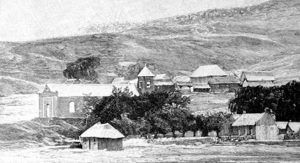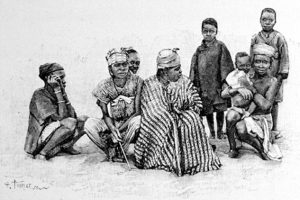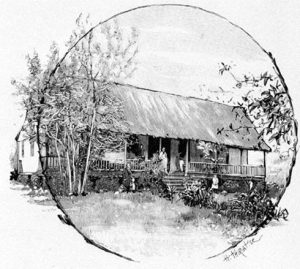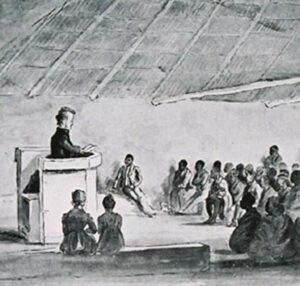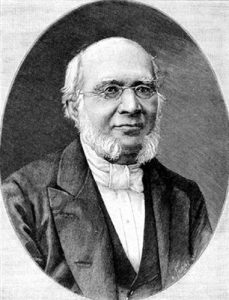The first mission area of the SMEP : Lesotho
The first French Protestant missionaries were sent not as pastors to the Boers of Huguenot descent but as “founders of a mission among the heathens”. Under the leadership of John Philip, the missionaries left to search for a mission field. In Botswana, Roland and Lemue founded a first mission station. But difficulties with Moselekatsi, the chief of the Ntebele, obliged them to abandon the site and flee. They retreated eastward to the vicinity of Lesotho where they were soon to play a part in the future SMEP mission to this country. Bisseux on the other hand, remained close to the Boers and spent 67 years in a town close to Cape Town, ministering to a group of Huguenot farmers.
In 1832, he SMEP Committee decided to send new missionaries to South Africa in order to help the pioneers who were experiencing difficulties in Botswana and find a safe and promising place to settle. Three French missionaries, Eugène Casalis, Thomas Arbousset and Constant Gosselin arrived in Cape Town in February 1833. The LMS staff had asked an African chief to guide them : Moshoeshoe, chief of the Sothos, was favourable to missionaries. He had managed to federate his country and to conquer the stronghold Thaba-Bosiu which was to remain the historic capital of Lesotho.
The rumour soon spread that Moshoeshoe was favourable to the arrival of French missionaries. The leaders of the LMS and the French missionaries considered this call as similar to the one the Apostle Paul had received from the Macedonian (Act 16, 9). On 28 June 1833, the historical meeting with the chief took place and the missionaries were invited to settle in the country. A likely settlement was found a few kilometres from Thaba-Bosiu ; it was named Morija, after the unknown land towards which Abraham walked in answer to God’s call (Gen 22). Two years later, the Lesotho Missionary Conference, gathering the first craftsmen of the mission, decided – with the Moshoeshoe’s agreement – to settle Casalis in Thaba-Bosiu.
Morija and Thaba-Bosiu represented the two models of SMEP missionary outposts on which the development of other stations in other countries was to be based. Morija was the “new” station where the first to hearers of the Gospel were to discover that it not only called for a change in one’s heart but also for a social change in the name of civilisation that, at the time, was deemed to be “Christian”. Evangelization included not only the teaching foreign languages (in this case, English), and of new skills in the fields of construction, agriculture, and hygiene, but also social, political and family ethics. Thaba-Bosiu remained the traditional station where the Gospel was announced in Sotho language and enacted as much as possible through the local cultural and community traditions. For the SMEP, the Lesotho experiment was to serve as a schooling for mission.
Senegal
Thanks to the intervention of the governor Jauréguiberry, a Protestant, another missionary experiment was begun by the French Protestants in Senegal in 1863. Jauréguiberry pretended the missionaries were navy chaplains and had them settle in Casamance, thus avoiding the capital Saint Louis, headquarters of the Catholic missions. However, the beginnings were very harsh : two of the five missionaries soon died, two others were brought home for health reasons, and the only remaining one had to be moved to Saint Louis. It was here that the Protestant mission thrived, especially among the Bambara population, made up of freed slaves from the upper Niger and Senegal rivers area seeking protection in the capital under French rule. Throughout the nineteenth century, the Protestant church cared for them and grew as a result of this ongoing flow of fugitives.
Tahiti
That same year, in 1863, began a number of unexpected events that got the SMEP involved in six other mission areas. The situation was the result of international circumstances. It was the beginning of the colonial expansion and, as the European rule of countries in Africa and Asia could change from one nation to another – mostly as the result of wars – the SMEP was asked to send French missionaries (or French-speaking ones) to replace or work alongside of “foreign” missionaries.
This type of experiment was begun in Tahiti in 1863. A former Lesotho missionary, Thomas Arbousset, tried to take over from British LMS missionaries present in the archipelago since 1797 but who had had to leave when France took possession of it in 1843. The British had done a tremendous work of evangelization : virtually the whole population had become Protestant in a society modernised by Christianity. The Bible had been translated into Tahitian since1838 and the literacy rate resulting from it was the basis of a school system that the French colonisers wished to take over, while replacing the learning of English by the learning of French. A twenty-year-long struggle between the French and the British authorities, the SMEP took over from the LMS and carried on its work with much difficulty. To the present day most of the Tahitian population has remained faithful to Protestantism.
The substitution of the British LMS missionaries by those of the SMEP likewise took place in two other archipelagos : New Caledonia and Madagascar. Together with French Polynesia, they made up the so-called “islands’ group”. But this will really take place during the following era, that of the “builders”, which really began after the Conference on Africa in Berlin in 1884-85. This international political conference decided on the division of the world into areas of influence by the different European powers and justified colonial territorial expansion. This was to have a major impact on the missionary movement.

